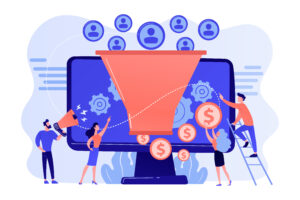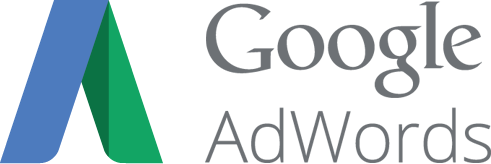Brad Post, Create the Movement, host
Jamie Stephens, Chief of Digital Strategy for Lift Division, guest
Brad Post, Create the Movement, host: Welcome back to this edition of Create the Movement podcast. I am excited and humbled to be with a great, long, long-time friend of mine, Jamie Stephens. Jamie, how are you?
Jamie Stephens, Lift Division, guest: I’m doing great, thanks, Brad.
BP: Good. Good. We’re actually best friends, I think. Or, at least you’re my best friend in 3rd or 4th-grade elementary school. Is that right? Am I remembering that correctly?
JS: Yeah, on through 7th-grade. We’ve got quite a few stories if I remember correctly.
BP: Yes, we do. Absolutely. We went to a huge high school and I think Jamie was much smarter than me, so we didn’t have any classes together. Is that right?
JS: I don’t remember it that way. But that’s true we didn’t have many classes together. I somehow found a way to avoid working too hard in high school. So, I’m not sure how I did that.
BP: We reconnected, probably what, two or three years ago? It’d been what, maybe 10 or 15 years since we connected. Right?
JS: Yeah. Yeah. You know, after high school, a lot of went our own ways. And both of us left Tulsa. And going back to Tulsa, even as I go back now, go back home I don’t get a chance to talk to everyone. But it was really great to get reconnected with you.
BP: And I was just excited to hear your story. And that’s what I want to get into. You’ve got two things going, or multiple things going. One, you stared a company called Book’d. And also, you are the Chief of Digital Strategy for Lift Division. Is that correct?
JS: Yeah. Yeah.
Jamie’s Background
BP: Well, tell us a little bit about your journey Jamie as an entrepreneur.
JS: Sure thing. Yeah. I started off, I’ve been in tech for about the last 20 years now and mostly building software. After I got a degree. I got a Humanities degree in classical languages when I went to University and graduated and hand no idea what I was going to do with it. So I went back and decided to get a computer science degree right at the time when the dot-com boom was getting big. And so, I was able to do some really interesting stuff in the early days.
Then, over several years, found myself consulting on my own. As I was a consultant the thing that I was most interested in doing was finding a product that could really help people. And I happened to be working in the photography industry quite a bit. Helping a large digital imaging company get, develop, use software and use technology to help photographers get their digital images and turn them into products so they could sell them to their customers.
So, one of the big needs that we saw, the number one need for photographers was to be able to sell their images online. And that was what everyone was trying to address. But the number two need was the ability for them to be able to have their customers schedule an appointment with them.
Bookd
And so, I identified that as a good opportunity to make a product. And so came up with Booked. Started marketing it towards photographers. But we built it in such a way that it could be used any service company. There’s a number of companies out there that are like this. That allow you to build, create a page, or kind of a portal, to accept appointments. But we took a position of we wanted it to be fit with the photographer’s brand. So, it has a website builder in it, and so forth.
BP: That’s Book’d, B-O-O-K-D .com. Correct?
JS: That’s right. Yeah. We couldn’t afford the ‘E’ at the time so we went with the apostrophe. So, yeah, it’s been interesting. Book’d and that path has gone through a number of different hills and valleys. So, early on, we had quite a bit of interest. When we first launched we got some publicity. Here I am, sitting in the Midwest, and having venture capital companies from the coasts giving us a call; interested in what we’re doing. And knowing that I didn’t want to move, after meeting with a couple of them, decided to not go that route and continue to bootstrap. Because the requirement was to move to the coast.
So, continued to bootstrap. Was growing it slowly, organically. Took on a little bit of funding. And that was an interesting point in the journey. In that now, when you take on funding, you’re not just answering to customers who you’re there to serve. But you’re also answering to investors. And so I’ve learned a lot about investors, and making sure that you have investors who are really on board with your vision. And making sure I’m communicating my vision to investors.
So, we went through that. We started building out a platform for Book’d that would be a little bit different. And approach the market in a different way. We got part way through that and we ran out of funds to do it. And so that put a stall on it for a little bit. And it was both kind of a hard thing, but a really good thing. Because we tried to do something and we weren’t able to.
What we had to do is go back to the customers and really just listen to them and dig in and say, “What do you really need? What is it that you absolutely have to have?” Rather than us coming up with things that we think you might need, and trying to put something together. How can we focus on you? And since then, it’s been very positive. And we’ve had very good support from our customers. And I feel like we’ve been able to build something that we’re proud of and we’re having fun with.
BP: That’s exciting. You’ve got customers nationwide? Or, is it international?
JS: We have a few international customers. Mostly English-speaking countries, although we do, every now and then, have non-English speaking countries sign up. Since we do allow people to accept payments, we only handle payment for English-speaking countries at this time. Great Britain, Australia, Canada, and the United States, are countries where you can sign up and take full advantage of the tool.
Lift Division
BP: Tell us the story about Lift Division. That’s consuming a lot of your time right now. Correct?
JS: It is. That’s absolutely right. In 2010, I was really pushing hard on Book’d. And working with a friend who was getting his marketing company going. He does a lot of SEO and content marketing. And we saw a lot of synergy in the kinds of things that we were doing together. And we decided, “Hey, while I’m working on pushing Book’d and getting it going, why don’t we do some things together?”
We decided to bring the software and marketing together and created a company called Lift Division. Focused mostly on local companies, small, locally-owned companies. Maybe some mid-sized. Helping them really just multiply their marketing efforts and using technology to multiply what they were doing online. And that’s really been the vision for Lift Division from day one.
BP: That’s really similar to what we do. It’s really exciting to talk shop with you Jamie. That was 2010, but then Book’d started taking off and you had to put it on the backburner to Lift Division? Where did that take you?
JS: Yeah. Sure. It was kind of a winding road. What happened was Book’d started taking off at the same time that Lift Division was looking for a different direction. And so, we sold Lift Division to another company and they continued on after that. And then I continued on doing Book’d and some other projects during that time.
It came about that the very first client that we had as Lift Division was a company in mid-Missouri called Service Noodle. And they were the first client that we had that we mapped out as a product, as a business – we mapped everything out for them. They decided that they needed to offer more services, and be more of a service provider for companies, than just what they were doing. So, they bought Lift Division. Lift Division ends up being bought out by its very first client. The founder is a great guy that I’ve known for years. After I saw what he was doing with the company, and the direction he was taking it, I saw an opportunity to come on board with him. The two of us, along with another partner, have been working very closely and pushing hard to make a difference here in mid-Missouri.
BP: And you guys have grown the team? You guys have a pretty big team now, right?
JS: We do.
BP: That’s awesome. And are you guys more local-focused there in Columbia, or is it nationwide?
JS: We have quite an array of customers now. We’ve had a lot of our customers here in Missouri. We have a lot in St. Louis. We’re branching out more there. We’ve got some customers on the East Coast – from North Carolina, Georgia, all the way up to New York, Canada, and Washington state. So, we are branching out. But I would say that a lot of our customers are here in Missouri.
Curated Content
BP: Great. Great. What’s one thing Jamie that’s really exciting to you about your business right now?
JS: There’s so many exciting things going on right now. Not just with our business, but in our industry. Just watching how quickly it’s changing, and how the rules are changing constantly. I think the thing that’s really intriguing me the most right now, especially with content marketing, and this might be more specific than you’re looking for.
Something that’s really exciting me right now is the idea of curated messaging. This is something that came up working with Book’d. When we were working with Book’d, we realized we were more than just an operational tool to help people with scheduling appointments. But really we became more and more of a marketing tool to help people get their message out there. And one of the hardest things with people, knowing with companies, they know they need to get regular messaging out. Regular newsletters. Regular content out. But it’s such a challenge for them to find it, and find relevant content, and just the discovery of it.
What you’ve seen over the last several years is a lot more tools focused on curating content. You’ve seen things like Scoop.it, and even like Product Hunt, is a really good example. Where you have curated content, you have a large community coming together and pulling this together. And then getting it into a different form to get out to people.
And so, one of the things that we’re really excited about is helping customers do that better. Because we feel like that’s one of the areas where we can multiply their resources – more than a lot of areas. So, we’ve really been focusing on that and finding new ways to where we can find quality content. We do a lot of content creation ourselves, so it’s not that we’re getting away from that. But trying to find ways to not introduce new habits, new behavior for our clients. But find ways that they can leverage the existing things that they’re doing. Our best clients are always learning and reading. If they can leverage that and take some of that and re-share it their audience, then we find that we have a winning solution.
We’ve been working our tools that allow them to do that. We’re pretty excited about some of the systems that we’ve developed and to be able to help our clients do more without feeling like they’re spending more time. The category we’ve been putting that in is the idea of curated messaging. Curate the things that you find are important. Maybe annotate them, put some context on them, and share them back out with your audience.
That’s something we’re excited about. It’s a trend I’ve seen within the industry in general and something that we’re trying to dig our heels into as well.
BP: That’s really good stuff. I had kind of a win yesterday. I don’t know if you saw it, but I became a Huffington Post contributor.
JS: I saw that. Congratulations!
BP: I don’t know if Google’s going to index it, or give us the link back. It all depends on the editor on whether they like it or share it with their network. But yeah, I got some traction on that.
JS: Fantastic!
BP: Also, with what we’re doing here now, with podcasting, we’ll have the content written out. It’s just all about sharing information.
JS: It is. And you guys are creating content all day long. You’re writing articles, you’re Tweeting, you’re on Facebook. You’re doing things all day long. And what we find is that’s what most business are (doing). But one of the things that we’ve found is that email is still the highest converting channel for most businesses. And if you have a solid list of people who are reading your emails then when you put something out there for them, you ask them for something, your conversion is typically higher than on other channels.
And so, what we wanted to do is really combine those two things. You’re creating podcasts, or even more than that, you’re ‘liking’ podcasts, you’re listening to podcasts. You’re out on SoundCloud, you favored a podcast, you’re on Amazon and you bookmarked some books, you’re on Twitter and you’re ‘liking’ a tweet. We’ve created a tool that allows you to pull all of that together. Use those assets that you have in your normal flow of life, and normal flow of working with social media. To pull all of those together and drag them over into a newsletter. And now you’ve created a newsletter without any additional work and that you can share out on a regular basis with your network, your followers.
BP: As far a being in business, what do you think would be the best business advice you’ve ever received?
JS: Good question. I think a quote that really sums up what I’ve learned, one of the biggest lessons I’ve learned being in business was to be successful in business, start by finding some small hurdles to jump over. And once you get really good at that, and know how to do it, then learn how pole vault.
I think that early on I wanted to pole vault first. And I wanted to do the big thing and get out there and be a big product company like some of the others without finding some of the easy wins first and building up to that. I think that that has really changed the way that I approach anything. If I go into a new area or industry I think that I’m going to do it in a way that really builds up more gradually next time.
BP: Good deal. I like it. What would you say is a book that you recommend, or are there multiple books that you’ve read recently?
JS: A couple that I’m re-reading. Both of them, I don’t feel like they are super business oriented. But one is ‘Flow’ by Mihaly, and I always have trouble with his last name because it’s very long, but it’s Csikszentmihalyi. I read it originally about 10 years ago because it was recommended for people building user interfaces. And he talks about flow as a concept: What are the elements of optimal experience? It’s something that’s been on my mind a lot lately. Not just in the things I design, but in terms of my own personal life. What are the elements that I need to be focused on for that optimal experience?
The other one is not business related at all, but it’s something else I’ve been reflecting on lately. And it affects my business, it affects everything that I do. Technically, it is more of a theology book. It is based in some Christian theology. But I think that takeaways that I get from it are a lot broader than just that. Anyway, the book is ‘Creation Regained.’ It’s by Albert Walters, and it’s a short, easy read. But the idea of it is that if you, and you don’t have to believe it to see the world this way. The idea if the world, if there is this idea of a perfect world, and the world that we’re in now is certainly not perfect. The question is: In our lives, in our businesses, in our culture, and everything that we do, are we moving the needle more towards that good and perfect world? Or, are we moving it away? And there’s a lot of definition of what ‘perfect’ is, and you can debate that. But in general, he goes through seven different areas and talks about how it’s being regained.
And I look at that in my life and my business. And I’m always thinking about every decision I make. “Am I moving that needle towards a better place, or am I moving it away from that?” So, that’s something that drives me. It’s always influenced me.
BP: So, ‘Flow’ and ‘Creation Regained.’ Correct? I’m always reading two or three books at a time, so I’m glad to hear somebody else does the same. Was there anything holding you back from becoming an entrepreneur, or doing your own thing when you started?
JS: I was always a software developer and very technical. And I found myself doing more and more work with clients. Early on, I didn’t think of myself as an entrepreneur. When I did think about going out on my own, or building a product, I realized, “If I’m going out on my own I’ve got to do it all.” I’ve got to be the marketing department, as well as the production, and the developer, and support, and everything until I can get people onboard with me. Early on, I wasn’t confident. I think in hindsight, if I had to do it over, I would have gotten a partner to help do those other things for me. But it’s definitely what kept me from jumping out there on my own for a while.
BP: You’re kind of a different breed, in a good way, Jamie. A lot of software developers just like to be ‘in’ the computer. They don’t really, and I hate to stereotype, but they don’t have a lot of people skills. And you’re very personable, and very good with clients. Is that fair to say? As far as software developers not being the most personable?
JS: You know, I think that is traditional characteristic. But something that I’ve learned over time, first of all, I feel like I, myself, am an accidental software developer. I tend to want to work with people. And I did software because it was also fun. But I find the culture around software development changing dramatically. And I find, more and more, that software developers, because I think it’s a more attractive field to go into than when we we’re in high school, because it’s more public. And I think that a lot of the interesting things that are being done in our culture are being done by software companies. So, I think that people want to be a part of that. And people who have always had the capacity, instead of going into things like finance, or something like that, are choosing things software engineering and software development. Because of that, I think that the culture around the software developers is changing. And you’re seeing a more social group and people who want to connect with others. And the nature of the tools they’re building has them wanting to connect with others.
Maybe, if I were the exception fifteen years ago, I don’t think I am as much anymore. I think that you’re seeing a lot more software developers be a part of multiple areas of a business.
BP: And as we close, Jamie, any podcasts that you’re listening to that you want to recommend?
JS: Great question. The one podcast that I listen to regularly is the Stanford eCorner. Never miss an episode of that. They always bring good people in and answer some really hard questions. So, it’s always a good time.
BP: Stanford eCorner. I haven’t heard of that. I’ll check it out. Anything else Jamie?
JS: I don’t think so. I’m just so excited that you invited me to be on your podcast, man. It’s so good to reconnect with you. I’m honored that you had me here.
BP: And we’re honored to have you as well, Jamie. Stay tuned for our next edition.











